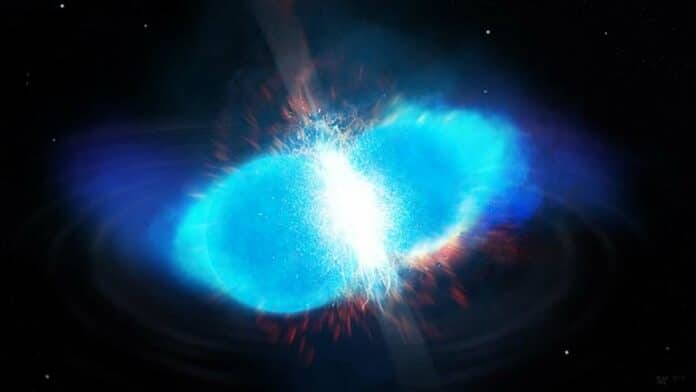The rapid neutron capture process (r-process) occurs in neutron-rich environments such as neutron star mergers or certain types of supernovae. This process is thought to produce many chemical elements heavier than iron, but the details need to be better understood and cannot be studied in the Laboratory.
DOE/Los Alamos National Laboratory scientists analyzed r-process element abundances previously observed in stars. They found a potential signature of fission, indicating that nature will likely produce superheavy nuclei beyond the heaviest elements on the periodic table.
Previously, it was believed that fission occurs in the cosmos. However, no one was able to prove it. For this study, scientists used the latest observations. They found correlations between light precision metals like silver and rare earth nuclei like europium. A positive correlation exists between the increasing elements in one of these element groups and the corresponding elements in the other group.
Scientists developed the fission models as they couldn’t measure everything relevant to weapons research as part of the laboratory’s mission. When measurements are scarce, the models help physicists interpret experiments and complete data sets. The models perform remarkably well compared to measured data, supporting their extrapolations without measurements. For studies of heavy element synthesis, the nuclear inputs of both short-lived and long-lived species are needed.
Matthew Mumpower, a theoretical physicist at Los Alamos National Laboratory, said, “The only plausible way this can arise among different stars is if there is a consistent process operating during the formation of the heavy elements.”
Scientists considered all the possibilities. They found fission was the only explanation that could reproduce the trend.
“This is incredibly profound and is the first evidence of fission operating in the cosmos, confirming a theory we proposed several years ago. As we’ve acquired more observations, the cosmos says, “Hey, there’s a signature here, and it can only come from fission.“
The study also indicates the possibility of heavy elements with an atomic mass of 260.
Mumpower originally predicted the fission fragment distributions for r-process nuclei in research published in 2020. The co-production of light precision metals and rare earth nuclei was expected in a later investigation conducted at TRIUMF under the supervision of collaborator Nicole Vassh.
One way to assess this co-production of elements is to compare the forecast with elemental abundances in a sample of stars. These elements include ruthenium, rhodium, palladium, and silver, as well as europium, gadolinium, dysprosium, and holmium.
The new study discovered the expected association after searching 42 stars’ observational data. Together with a similar pattern of elements that are a little heavier and higher on the periodic table, the pattern identifies the fission that produced these elements.
Mumpower said, “The correlation is very robust in r-process enhanced stars with sufficient data. Every time nature produces an atom of silver, it produces heavier rare earth nuclei in proportion. The composition of these element groups is in lock step. We have shown that only one mechanism can be responsible — fission — and people have been racking brains about this since the 1950s.”
Journal Reference:
- Ian U. Roederer, Nicole Vassh, Erika Holmbeck et al. Element abundance patterns in stars indicate fission of nuclei heavier than uranium. Science. DOI: 10.1126/science.adf1341
